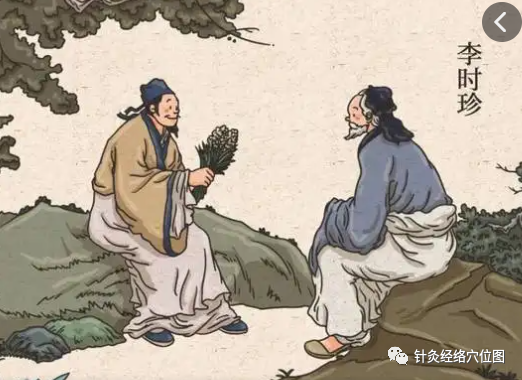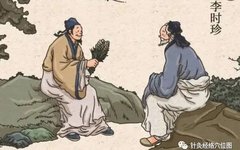As people reach middle age, many exhibit symptoms of Qi deficiency. Traditional Chinese Medicine (TCM) often recommends tonifying Qi. While this concept is correct, relying solely on TCM and herbal medicine to tonify Qi is far from sufficient; it is merely a drop in the bucket, and most middle-aged and elderly individuals are unable to benefit from such tonification. Why? Because these individuals not only suffer from Qi deficiency but also from Qi stagnation.
The acupuncture meridian point diagram indicates that if the issue of Qi stagnation is not resolved, the more Qi is tonified, the more severe the accumulation becomes. When this accumulated Qi reaches a certain intensity, it can lead to internal wind of the liver, transforming this Qi into rebellious Qi, which is waste Qi. Such waste Qi not only fails to replenish our original Qi but can also harm our bodies.

This introduces a concept: regulating Qi.
Regulating Qi means to smooth and facilitate the flow of Qi, allowing it to circulate freely.
In TCM, the regulation of Qi primarily addresses conditions of Qi deficiency and Qi counterflow. Qi deficiency manifests as reduced function of the body or organs, and Qi deficiency should be tonified, as discussed in the section on tonifying formulas. Qi stagnation and Qi counterflow manifest as functional disorders of the body or organs; Qi stagnation should be moved, and Qi counterflow should be descended. Regulating Qi formulas have the function of moving or descending Qi and are mainly used for conditions such as liver Qi stagnation, spleen and stomach Qi stagnation, lung Qi obstruction, and stomach Qi counterflow.
Specific methods of regulating Qi in TCM primarily utilize herbal medicine. For example, Chen Pi (Dried Tangerine Peel).
Effects of Chen Pi:
1. Used for symptoms of chest and abdominal distension. Chen Pi is pungent, dispersing, and warming, with an aromatic flavor, excelling in regulating Qi. It can enter the spleen and lungs, thus both dispersing lung Qi obstruction and regulating Qi in the middle, making it suitable for lung Qi stagnation, chest oppression, and spleen and stomach Qi stagnation, as well as abdominal distension. It is often used in combination with Mu Xiang (Aucklandia) and Zhi Ke (Bitter Orange).
2. Used for damp obstruction in the middle burner, abdominal distension, loose stools, and excessive phlegm cough. Chen Pi is bitter, warming, and dries dampness while strengthening the spleen, thus commonly used for damp obstruction in the middle burner, abdominal distension, and loose stools. It can be combined with Cang Zhu (Atractylodes) and Hou Po (Magnolia Bark). It is also effective in drying dampness and transforming phlegm, making it a common herb for treating phlegm obstructing the lungs and excessive cough, often used with Ban Xia (Pinellia) and Fu Ling (Poria).
3. Used for spleen deficiency with reduced appetite, indigestion, and nausea or vomiting. This herb dries dampness while strengthening the spleen and opening the appetite, suitable for spleen and stomach weakness, reduced appetite, indigestion, and diarrhea. It is often combined with Ren Shen (Ginseng), Bai Zhu (White Atractylodes), and Fu Ling (Poria). Because it can both strengthen the spleen and regulate Qi, it is often used as an adjunct to tonifying herbs, allowing for tonification without stagnation, preventing obstruction and distension. Additionally, Chen Pi can harmonize the middle, treating stomach disharmony and nausea or vomiting. If there is cold in the stomach causing vomiting, it can be used with Sheng Jiang (Fresh Ginger); if there is heat in the stomach causing vomiting, it can be combined with Zhu Ru (Bamboo Shavings) and Huang Lian (Coptis).
Foods that regulate Qi include: green vegetables, radishes, cucumbers, cauliflower, celery, winter melon, loofah, water chestnuts, napa cabbage, broccoli, water bamboo, kumquats, hawthorn, cinnamon, and star anise.
These herbs and foods may have a certain effect on regulating Qi, but they are not a fundamental solution.
The author believes that, firstly, tonifying Qi and regulating Qi are contradictory. Regulating Qi and tonifying Qi complement each other; if Qi is weak and regulation is excessive, it can further lead to Qi deficiency and damage original Qi; if regulation is too weak and tonification is excessive, it can lead to internal wind of the liver. This explains why individuals with deficiency easily experience heat symptoms, such as nosebleeds when consuming ginseng, indicating that regulating Qi and tonifying Qi must be balanced to achieve optimal tonification effects, allowing original Qi to be abundant. However, relying solely on medication cannot achieve this balance.
Secondly, the fundamental way to regulate Qi is through physical exercise and breath training to open up the meridians and the Ren and Du vessels. This is the essence of regulating Qi. Moreover, this method of regulating Qi has no side effects; more importantly, this self-regulation of Qi relies on the body’s Qi mechanism to automatically find the best methods and pathways, ensuring that tonification reaches the designated body parts.
It should also be noted that many people believe that once the Ren and Du vessels are opened, everything is fine, which is a grave misunderstanding. Opening the Ren and Du vessels is merely the beginning of health maintenance; these vessels can become sluggish and obstructed due to weather, mood, environment, and unknown factors. It is like cleaning up garbage; daily cleaning is necessary as new garbage will accumulate every day. Can you say that once it is clean for a day, it will remain clean forever? No!
At first, opening the Ren and Du vessels is just settling old accounts, clearing out the accumulated garbage in the body. This is historical sedimentation. After that, you must eat daily, endure wind, cold, heat, dampness, dryness, and fire, and experience the seven emotions and six desires, all of which will generate waste in the body. Therefore, to maintain smooth Qi flow daily, repetitive exercise is necessary.
Fire Function Massage suggests that based on exercise, we can use some herbs and foods as supplementary buffers, such as Chen Pi, radishes, cucumbers, cauliflower, celery, winter melon, etc. They can make the regulation of Qi smoother and more seamless.
It is like building a house; bricks are the foundational materials. In regulating Qi, exercise is equivalent to the bricks; while cement is the adhesive, in regulating Qi, Chen Pi, radishes, etc., serve as the cement. When they are well combined, the regulation of Qi will be smooth and unimpeded.
TCM teaches that movement generates Yang. What is Qi? Qi is Yang.
When you exercise, you are increasing your Yang Qi. Therefore, it becomes clear: exercise can both tonify Qi and regulate Qi, having a dual regulatory effect. When we exercise and add some ingredients like Chen Pi and radishes, it is like icing on the cake.
Give a thumbs up to support health!
_Follow us through the “business card” below
Light it up to let more people see👇

